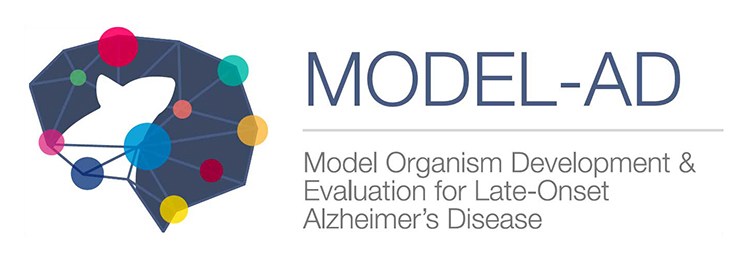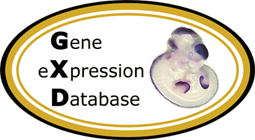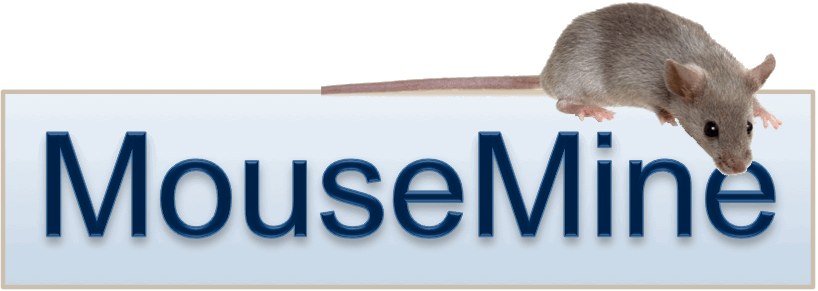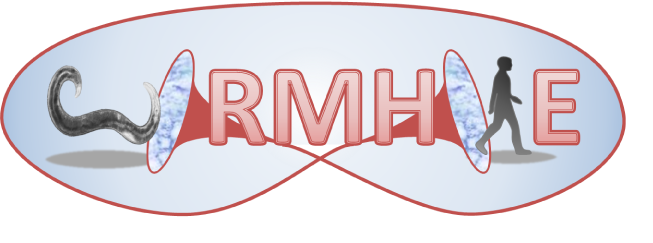| Name | Name (A-Z) | Research Area | Type | Description |
|---|---|---|---|---|

AMP-AD Knowledge PortalAccessOnline & Download Associated Laboratories/IndividualsContact |
AMP-AD Knowledge Portal | Data Science at The Jackson Laboratory | Database|Dataset |
The AMP-AD Knowledge Portal is a platform to access data, analytical results and tools generated within the National Institute of Aging’s AD Translational Research Program. The majority of the content in the Portal is genomic data generated from human samples or experimental model systems. The Portal also contains analytical results and data summaries.
Read less
Read more…
The AMP-AD Knowledge Portal is a platform to access data, analytical results and tools generated within the National Institute of Aging’s AD Translational Research Program. All projects within this program operate as an open science collaboration and openly share resources early in the research life cycle for evaluation and reuse. The Portal is named for the first consortium to be initiated, the Accelerating Medicines Partnership in Alzheimer’s Disease Target Discovery and Preclinical Validation Project (AMP-AD). The majority of the content in the Portal is genomic data generated from human samples or experimental model systems, including the MODEL-AD Consortium. In addition to this, the Portal also contains bioinformatic analytical results including some generated by teams within individual projects and some generated through multi-team working groups. Bioinformaticians can download these resources for use in their own research. You will need a Synapse account to access the data in the AMP AD Knowledge Portal. The AMP-AD Knowledge Portal is funded by the National Institute on Aging. It is developed and maintained by Sage Bionetworks.
|

Model-AD Consortium |
Model-AD Consortium | Data Science at The Jackson Laboratory|JAX Center for Alzheimer's and Dementia Research | Resource |
Model organism development and evaluation for late-onset Alzheimer's Disease.
Read less
Read more…
The MODEL-AD consortium, consisting of a Center at Indiana University, The Jackson Laboratory, and Sage Bionetworks and a Center at the University of California Irvine, has been established by the National Institute on Aging to:
|
aln ToolsAccessDownload Associated Laboratories/IndividualsContact |
aln Tools | Data Science at The Jackson Laboratory | Software Tools & Analysis |
Processes NGS alignments into a sparse compressed incidence matrix. Stores pre-defined binary format for efficient downstream analyses and storage.
|
I-ATACAssociated Laboratories/Individuals |
I-ATAC | Bioinformatics|Computational Biology | Resource |
ATAC-seq is a new protocol to capture open chromatin sites by performing adaptor ligation and fragmentation of open chromatin regions. Due to its efficiency in requirement of biological sample and in library preparation time, many scientists are generating ATAC-seq libraries to decipher the chromatin landscape of DNA in a given cell type and condition of interest.
|

Mouse Models of Human Cancer Database (MMHCdb)AccessOnline Associated Laboratories/IndividualsContact |
Mouse Models of Human Cancer Database (MMHCdb) | Bioinformatics|Genetics and Genomics|Data Science at The Jackson Laboratory | Database |
The Mouse Models of Human Cancer Database (formerly, the Mouse Tumor Biology database) integrates data on the frequency, incidence, genetics, and pathology of neoplastic disorders, emphasizing data on tumors that develop characteristically in different genetically defined strains of mice.
Read less
Read more…
The MMHCdb database supports the use of a mouse model system for human cancer by providing a comprehensive resource for data and information on various tumor models. The database provides access to information on and data for: spontaneous and induced tumors in mice, genetically defined mice (inbred, hybrid, mutant, and genetically engineered strains of mice) in which tumors arise, genetic factors associated with tumor susceptibility in mice, somatic genetic-mutations observed in tumors, and Patient Derived Xenograft (PDX) models.
|

Random Circuit Perturbation (sRACIPE)AccessDownload Contact |
Random Circuit Perturbation (sRACIPE) | Data Science at The Jackson Laboratory | Software Tools & Analysis |
sRACIPE is a systems-biology modeling method which takes the gene regulatory circuit topology as the only input, and simulates an ensemble of models with random kinetic parameters at multiple noise levels. Statistical analysis of the generated gene expressions reveals the basin of attraction and stability of various phenotypic states and their changes associated with intrinsic and extrinsic noises yielding new insights on the structure and function of gene regulatory networks.
|
CloudNeoAccessOnline & Download Associated Laboratories/IndividualsContact |
CloudNeo | Data Science at The Jackson Laboratory | Software Tools & Analysis |
CloudNeo is a cloud-based computational workflow for identifying patient-specific tumor neoantigens from next generation sequencing data.
|
Gene Ontology Consortium |
Gene Ontology Consortium | Genetics and Genomics|Resource Development and Dissemination|Bioinformatics | Resource |
The Gene Ontology (GO) project is a collaborative effort to address the need for consistent descriptions of gene products across databases.
|

Cre PortalContact |
Cre Portal | Resource Development and Dissemination|Data Science at The Jackson Laboratory | Database |
The Cre Portal contains curated data about all recombinase-containing transgenes and knock-ins developed in mice to provide a comprehensive resource delineating known recombinase activity patterns and allowing users to find relevant mouse resources for their studies.
Read less
Read more…
Conditional mutagenesis is a powerful technique that allows studies of gene function where knockout homozygotes are lethal or where the mutation affects multiple systems. This technique is dependent on activity of a recombinase in a tissue or life stage of interest. Information on cre activity and specificity in mice that express recombinases is collected in the Cre Portal. Mouse resources expressing recombinases in a spatial or temporal manner can be queried by tissue or by driver of recombinase expression. Autocomplete of these search boxes will show all available terms; terms in bold indicate data is available for that term. Downloadable reports, data metrics and links to related queries are also available. Data are also available at www.mousemine.org via custom queries and API.
|
Mouse Mutant Resource DatabaseAccessOnline Contact |
Mouse Mutant Resource Database | Data Science at The Jackson Laboratory | Database|Software Tools & Analysis |
The MMR mouse variation database provides access to all genetic variants called from high-throughput exome and whole genome sequencing from mice exhibiting spontaneously arising Mendelian disease phenotypes. Phenotype, genetic mapping, and variant frequency metrics are also provided. Aggregated data analyses provide mutation candidate prioritization.
Read less
Read more…
We developed the Mouse Mutant Resource Database (https://mmrdb.jax.org) to host annotated variant calls and sample metadata and to facilitate data sorting, filtering, querying, and sharing. The database employs an algorithm for variant prioritization. The algorithm makes the following assumptions about causative variants: they will be rare (<3%) in the database, the allele ratio of the variant in the sample will fall within expectations for the sample genotype (>0.9 homozygous; 0.2–0.8 heterozygous), and the chromosomal position of the variant will be in agreement with chromosomal linkage data. We optimized the algorithm iteratively by reanalyzing exome data sets with previously confirmed, known mutations.
|

Gene Expression Database (GXD)AccessOnline Contact |
Gene Expression Database (GXD) | Data Science at The Jackson Laboratory | Database |
Gene Expression Database (GXD) is a database project that integrates different types of gene expression information from the mouse and provides a searchable index of published experiments on endogenous gene expression during development. GXD as a core component of the Mouse Genome Informatics (MGI) resource which is the international community database resource for the laboratory mouse, providing integrated genetic, genomic, and biological data to facilitate the study of human health and disease.
Read less
Read more…
GXD stores primary data from different types of expression assays. By integrating these data, GXD provides, as data accumulate, increasingly complete information about the expression profiles of transcripts and proteins in different mouse strains and mutants. GXD also describes expression patterns using an extensive, hierarchically-structured dictionary of anatomical terms. In this way, expression results from assays with differing spatial resolution are recorded in a standardized and integrated manner and expression patterns can be queried at different levels of detail. GXD places the gene expression data in the larger biological context by establishing and maintaining interconnections with many other resources. Integration with MGD enables a combined analysis of genotype, sequence, expression, and phenotype data. Links to PubMed, Online Mendelian Inheritance in Man (OMIM), sequence databases, and databases from other species further enhance the utility of GXD.
|

Mouse Genome Database (MGD)AccessOnline Contact |
Mouse Genome Database (MGD) | Data Science at The Jackson Laboratory | Database |
Mouse Genome Database (MGD) is a core knowledgebase for the laboratory mouse and is focused on providing integrated genetic, genomic, and biological data to facilitate the study of human health and disease. MGD is a primary component of the Mouse Genome Informatics (MGI) Consortium.
Read less
Read more…
The Mouse Genome Database (MGD) is the international community mouse database which supports basic, translational and computational research by providing integrated data on the genetics, genomics, and biology of the laboratory mouse. MGD serves as the source for biological reference data sets related to mouse genes, gene functions, phenotypes and disease models with an increasing emphasis on the association of these data to human biology and disease. MGD is the authoritative source of mouse gene and strain nomenclature as well as annotations for mouse gene function, phenotypes and human disease models.
|
Mouse Phenome DatabaseAssociated Laboratories/Individuals |
Mouse Phenome Database | Data Science at The Jackson Laboratory|Bioinformatics|Complex Traits|Computational Biology|Genetics and Genomics | Database|Resource |
This resource is a collaborative standardized collection of measured data on laboratory mouse strains and populations. Includes baseline phenotype data sets as well as studies of drug, diet, disease and aging effect. Also includes protocols, projects and publications, and SNP, variation and gene expression studies.
|
Digital Pathology PipelineAssociated Laboratories/Individuals |
Digital Pathology Pipeline | Genetics and Genomics|Computational Biology | Software Tools & Analysis |
Tools for automatic glomerulus identification and histological quantification from scanned PAS slides
|
Glaucoma Discovery PlatformAccessOnline Associated Laboratories/IndividualsContact |
Glaucoma Discovery Platform | Data Science at The Jackson Laboratory | Database|Dataset|Software Tools & Analysis |
Visualize and interrogate gene expression changes in glaucoma
Read less
Read more…
The Glaucoma Discovery Platform allows a user to visualize and interrogate gene expression changes in glaucoma, based on a study done in the lab of Simon John at the Jackson Laboratory. At the time of development existing resources such as GEO and ArrayExpress were not suitable for interrogating and visualizing such as complex dataset. Therefore, to maximize the benefit of this study for us, and the wider scientific community, we developed Glaucoma Discovery Platform, a freely available web-based environment. Glaucoma Discovery Platform was developed using a suite of scripts we term Datgan. To our knowledge, no other resource was available that provided this combination of user-friendly functionality.
|
EMASEAccessDownload Associated Laboratories/IndividualsContact |
EMASE | Data Science at The Jackson Laboratory | Software Tools & Analysis |
An expectation maximization algorithm for allele specific expression. Primary author K. Choi of the Churchill Lab.
|

PDX FinderAccessOnline Associated Laboratories/IndividualsContact |
PDX Finder | Data Science at The Jackson Laboratory | Database |
PDX Finder is an open global cancer research portal to patient derived xenograft (PDX) models.
Read less
Read more…
Patient-derived tumor xenograft (PDX) mouse models are a versatile oncology research platform for studying tumor biology and for testing chemotherapeutic approaches tailored to genomic characteristics of individual patient’s tumors. PDX models are generated and distributed by a diverse group of academic labs, multi-institution consortia, and contract research organizations. The distributed nature of PDX repositories and the use of different metadata standards presents a significant challenge to finding PDX models relevant to specific cancer research questions. The Jackson Laboratory and EMBL-EBI are addressing these challenges by co-developing PDX Finder, a comprehensive open global catalog of PDX models and their associated datasets. Within PDX Finder, model attributes are harmonized and integrated using a previously developed community minimal information standard to support consistent searching across the originating resources. Links to repositories are provided from the PDX Finder search results to facilitate model acquisition and/or collaboration.
|

FusorSVAssociated Laboratories/IndividualsContact |
FusorSV | Computational Biology|Genetics and Genomics|Data Science at The Jackson Laboratory | Software Tools & Analysis |
FusorSV is a data mining-based framework that allows for comprehensive and robust detection of Structural Variations (SV) from next generation sequencing datasets. We built SV engine (SVE) that includes all tools including fusorSV that can be used for analysis of new datasets. SVE also includes data models built using 1000 Genomes SV callsets as ground truth.
Read less
Read more…
Comprehensive and accurate Structural Variation (SV) discovery from next generation sequencing data remains a major challenge. Popular approaches to overcome performance limitations of existing SV-calling algorithms are to use complementary algorithms to determine the SV loci and then merge them under a heuristic manner. However, such approaches do not consider the strengths and weaknesses of individual algorithms and either under or over merge the variant loci resulting in false SV calls. Here, we present FusorSV, an open source tool that uses a data mining approach to assess performance and merge callsets from an ensemble of SV-calling algorithms. We developed a FusorSV SV calling model using an ensemble of eight SV-calling algorithms for the analysis of 27 deep-coverage human genomes from the 1000 Genomes Project (1000GP). For an easy-to-use SV detection pipeline, we also built Structural Variation Engine (SVE) that is capable of performing gold standard SV analysis for whole genome sequencing projects.
|
g2g ToolsAccessDownload Associated Laboratories/IndividualsContact |
g2g Tools | Data Science at The Jackson Laboratory | Software Tools & Analysis |
Genome Editing tools. Creates custom genomes by incorporating (phased) SNPs and indels into reference genome, extracts regions of interest, e.g., exons or transcripts, from custom genomes, and converts coordinates of files (bam, gtf, bed) between two genomes.
|
gbrsAccessDownload Associated Laboratories/IndividualsContact |
gbrs | Data Science at The Jackson Laboratory | Software Tools & Analysis |
Genotype-free genome reconstruction and ASE quantification.
Read less
Read more…
Example use case deducing potential sample mixups by comparison of GigaMUGA haplotype reconstructions to haplotypes deduced from islet RNA-seq-based genotype-by-sequencing method (mentioned in Chick/Munger et al. Defining the consequences of genetic variation on a proteome–wide scale, 2016 PMID: 5292866).
|

GeneWeaverAccessOnline Associated Laboratories/IndividualsContact |
GeneWeaver | Data Science at The Jackson Laboratory | Database|Dataset|Software Tools & Analysis |
GeneWeaver is a platform for the integrative analysis of heterogeneous functional genomics data. It allows users to compare and contrast biological functions across multiple species based on the genes, gene products and variants associated with these functions in global functional genomics analyses.
Read less
Read more…
GeneWeaver is a database and suite of tools for the discovery of convergent relations among heterogeneous functional genomics studies of biological processes and disease related functions. It consists of a collection of integrated micro-services for the aggregation and integration of multi-species functional genomics data from curated resources, published experiments and aggregated evidence from genomic data resources. Its analysis services are built on statistical scalable combinatorial algorithms to allow users to develop custom workflows to perform set operations to compare and contrast diverse data sets. The system is accessed either through a user-friendly browser interface or an API. All analyses are repeatable on the original instance of user-selected data. A curation interface allows users to manage the storage of gene sets from literature and to perform annotation of gene sets to controlled vocabularies and ontologies.
|
Multiple Genome ViewerAccessOnline Contact |
Multiple Genome Viewer | Data Science at The Jackson Laboratory | Software Tools & Analysis |
Explore and compare multiple annotated mouse genomes.
Read less
Read more…
The Multiple Genome Viewer (MGV) allows you to explore and compare chromosomal regions and synteny blocks between the C57BL/6J reference genome and 18 other mouse inbred strains: 16 sequenced and annotated by the Wellcome Institute Sanger Mouse Genomes Project and two (CAROLI/EiJ and PAHARI/EiJ) published by Paul Flicek and Duncan Odom and others, as well as the C57BL/6J reference genome.
|
Human Phenotype OntologyAccessOnline & Download Associated Laboratories/IndividualsContact |
Human Phenotype Ontology | Data Science at The Jackson Laboratory | Database |
The Human Phenotype Ontology (HPO) provides a standardized vocabulary of phenotypic abnormalities encountered in human disease.
Read less
Read more…
The Human Phenotype Ontology (HPO) provides a standardized vocabulary of phenotypic abnormalities encountered in human disease. Each term in the HPO describes a phenotypic abnormality, such as Atrial septal defect. The HPO is currently being developed using the medical literature, Orphanet, DECIPHER, and OMIM. HPO currently contains over 13,000 terms and over 156,000 annotations to hereditary diseases. The HPO project and others have developed software for phenotype-driven differential diagnostics, genomic diagnostics, and translational research. The HPO is a flagship product of the Monarch Initiative, an NIH-supported international consortium dedicated to semantic integration of biomedical and model organism data with the ultimate goal of improving biomedical research. The HPO, as a part of the Monarch Initiative, is a central component of one of the 13 driver projects in the Global Alliance for Genomics and Health (GA4GH) strategic roadmap.
|
ImageEchelonAccessOnline & Download Associated Laboratories/IndividualsContact |
ImageEchelon | Data Science at The Jackson Laboratory | Software Tools & Analysis |
Tool to quantify images where meaningful differences are discernible by eye, but difficult to quantify using traditional methods.
Read less
Read more…
Image Echelon is a tool to quantify images where meaningful differences are discernible by eye, but difficult to quantify using traditional methods. It was developed to quantify neuronal fasciculation in microscopy images, but can be used to rank images based on any qualitative criteria. Classical methods ask observers to score an image in isolation along a scale (e.g., 1-5), which can be difficult to control between observers, especially in a highly variable data set. Image Echelon asks observers to compare two images and pick a “winner” and a “loser” along some criteria, an easier and more reliable task.
|
IntermediateAccessDownload Associated Laboratories/IndividualsContact |
Intermediate | Data Science at The Jackson Laboratory | Software Tools & Analysis |
An R package for eQTL/pQTL mediation analysis.
Read less
Read more…
Example use case deducing potential sample mixups by comparison of GigaMUGA haplotype reconstructions to haplotypes deduced from islet RNA-seq-based genotype-by-sequencing method (mentioned in Chick/Munger et al. Defining the consequences of genetic variation on a proteome–wide scale, 2016 PMID: 5292866).
|

International Mouse Strain Resource (IMSR)AccessOnline Contact |
International Mouse Strain Resource (IMSR) | Resource Development and Dissemination|Data Science at The Jackson Laboratory | Database |
The International Mouse Strain Resource offers users a combined catalog of worldwide mouse resources (live, cryopreserved, and embryonic stem cells), with direct access to repository sites holding those resources of interest.
Read less
Read more…
The International Mouse Strain Resource (IMSR) provides an online searchable web-based catalog of mouse resources available globally, including inbred, mutant, and genetically engineered mice, cryopreserved embryos and gametes, and ES cell lines. The IMSR website provides, for each strain or cell line, links for ordering, links to the repositories’ strain description, and links to phenotype and disease model data at Mouse Genome Informatics (MGI). Searches can be performed using one or many parameters, including the strain/stock designation, the strain repository or MGI ID, the state in which the strain/resource is maintained and the strain type. Genetic search parameters include the symbol or name of the phenotypic allele or gene of interest carried in the strain, and repository parameters include the name of one or more specific repositories, or the selection of all repositories in a geographical regional location.
|

MouseMineAccessOnline Contact |
MouseMine | Resource Development and Dissemination|Data Science at The Jackson Laboratory | Database |
MouseMine is a powerful data warehouse providing comprehensive API (application programming interface) access to MGI data, as well as a forms-based user interface.
Read less
Read more…
MouseMine is a powerful data warehouse providing comprehensive API (application programming interface) access to MGI data, as well as a forms-based user interface. MouseMine contains core data from MGI, including the mouse genome feature and allele catalogs, disease and phenotype annotations, expression data, publications, etc. Users can select from predefined query templates or construct custom queries and reports, iteratively refine searches, and save/reuse lists of results.
|
PDX Development and Trial Centers Research NetworkAccessOnline Associated Laboratories/IndividualsContact |
PDX Development and Trial Centers Research Network | Data Science at The Jackson Laboratory | Database |
PDXNet is an NCI-sponsored consortium that uses patient-derived xenografts to accelerate translational research for the broader research community. The Chuang lab has been co-leader of the Data Coordination Center for this consortium since 2017.
|
RFR-PELAssociated Laboratories/Individuals |
RFR-PEL | Bioinformatics|Computational Biology|Genetics and Genomics | Resource |
Random Forest Regression for Epigenetic Length prediction
|
QTL ViewerAccessOnline & Download Associated Laboratories/IndividualsContact |
QTL Viewer | Data Science at The Jackson Laboratory | Software Tools & Analysis |
Interactive web-based analysis tool that will allow users to replicate analyses reported for a study.
Read less
Read more…
QTL Viewer is an interactive web-based analysis tool that will allow users to replicate the analyses reported for a study (For example the viewer at http://churchill-lab.jax.org/qtl/islet/DO378 represents the data published in the paper Keller, et al. Genetic Drivers of Pancreatic Islet Function, PMID 29567659). It includes the ability to search various subsets of data from a study such as phenotypes or expression data and then visualize data with profile, correlation, LOD, effect, mediation and SNP association plots.
|
QuINAssociated Laboratories/Individuals |
QuIN | Computational Biology|Bioinformatics|Genetics and Genomics | Resource |
QuIN (Query tool for Interaction Networks, available at quin.jax.org) is a tool for visualizing, annotating, and querying chromatin interactions derived from technologies such as ChIA-PET or HiC.
|
SARNAclustAccessDownload Associated Laboratories/IndividualsContact |
SARNAclust | Data Science at The Jackson Laboratory | Software Tools & Analysis |
SARNAclust is a novel semi-automatic algorithm to identify RNA-protein binding motifs from immunoprecipitation data.
Read less
Read more…
SARNAclust is the first unsupervised method to identify and deconvolve multiple RNA sequence/structure motifs simultaneously. SARNAclust computes similarity between sequence/structure objects using a graph kernel, providing the ability to isolate the impact of specific features through the bulge graph formalism. For full details see: https://doi.org/10.1371/journal.pcbi.1006078 Dotu I, Adamson SI, Coleman B, Fournier C, Ricart-Altimiras E, Eyras E, et al. (2018) SARNAclust: Semi-automatic detection of RNA protein binding motifs from immunoprecipitation data. PLoS Comput Biol 14(3): e1006078.
|

WORMHOLEAccessOnline & Download Associated Laboratories/IndividualsContact |
WORMHOLE | Genetics and Genomics|Resource Development and Dissemination|Data Science at The Jackson Laboratory | Database |
The WORM Human OrthoLogy Explorer is a meta-tool that uses machine learning to predict novel least diverged orthologs (LDOs) by integrating ortholog predictions from 17 algorithms.
Read less
Read more…
Support vector machine (SVM) classifiers are trained to distinguish whether a gene is or is not an LDO by comparing the predictions of the consituent algorithms across a set of high-confidence examples of known LDOs (the PANTHER LDOs). Originally conceived to predict orthologs between humans and worms, the scope was later expanded to include five commonly used eukaryotic model organisms: humans (Homo sapiens), mice (Mus musculus), zebrafish (Danio rerio), fruit flies (Drosophila melanogaster), and nematodes (Caenorhabditis elegans). The WORMHOLE SVMs are used to calculate LDO confidence scores (aka WORMHOLE Scores) for genome-wide gene pairs between combination of species.
|